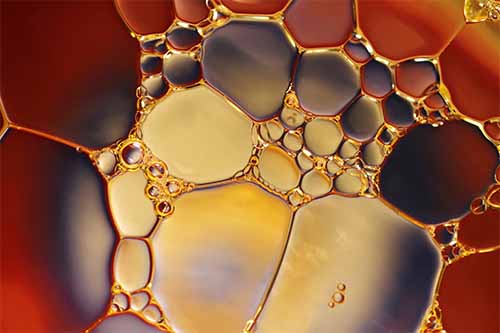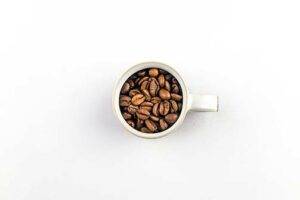
Where Are the Best Coffee Beans in New Zealand?
Nothing beats the sensation of that first sip. A new coffee flavour you’ve never tried before — and now it’s all yours. As the caramel

There are many different brewing methods for coffee, each with its own unique flavor profile and set of pros and cons. Here are a few popular brewing methods and an explanation of how they work:
This is the most common method of brewing coffee in the United States and many other countries. It involves using a coffee maker with a paper or metal filter to separate the grounds from the water. The water is heated to a specific temperature and then poured over the grounds, where it steeps for a few minutes before dripping into a carafe or pot. The science behind drip coffee brewing involves the extraction of soluble compounds from the ground coffee beans using hot water, and the separation of the liquid coffee from the grounds using a filter. The variables that affect the brewing process include the grind size, water temperature, contact time and coffee-to-water ratio.
This method involves brewing coffee in a cylindrical pot called a French press. The coffee grounds are placed in the pot and hot water is added. The mixture is then left to steep for several minutes before a metal or nylon mesh filter is pressed down to separate the grounds from the liquid. The science behind French press coffee brewing involves the extraction of soluble compounds from the ground coffee beans using hot water, and the separation of the liquid coffee from the grounds using a plunger and mesh filter. The variables that affect the brewing process include the grind size, water temperature, contact time and coffee-to-water ratio.
Pour-over coffee, also known as manual drip coffee, is a method of brewing coffee in which hot water is poured over ground coffee beans, which are contained in a filter. The water passes through the grounds and is collected in a carafe or pot, where it becomes the brewed coffee.
The key difference between drip and pour-over coffee is the way the water is poured over the grounds. In pour-over, the water is poured in a circular motion over the grounds, which allows for a more controlled and consistent flow rate. This allows for a better extraction of the soluble compounds and a more consistent brew.
In summary, the science behind pour-over coffee brewing involves the extraction of soluble compounds from the ground coffee beans using hot water, and the separation of the liquid coffee from the grounds using a filter. The variables that affect the brewing process include the grind size, water temperature, contact time and coffee-to-water ratio, and the way the water is poured over the grounds.
This method is a more complex and elegant way of brewing coffee, it involves using two chambers and a filter to brew the coffee. The lower chamber contains water which is heated by a flame or electricity, creating pressure that pushes the water into the upper chamber. Once the upper chamber is full, the coffee grounds are added and left to steep for a few minutes. The filter separates the coffee from the water and the liquid is then pushed back down to the lower chamber.
The key difference between siphon and other coffee brewing methods is the use of a vacuum to extract the soluble compounds from the coffee beans, which results in a clean and consistent brew. The use of the heat source and the pressure difference between the two chambers allows for a greater degree of control over the brewing process, and it allows the user to monitor the brewing process and make adjustments as needed.
The science behind siphon coffee brewing involves the extraction of soluble compounds from the ground coffee beans using hot water and a vacuum, and the separation of the liquid coffee from the grounds using a filter. The variables that affect the brewing process include the grind size, water temperature, contact time and coffee-to-water ratio, and the use of heat and vacuum to control the brewing process. It allows for precise temperature and timing control, which can result in a very clean and balanced cup of coffee.
This method involves steeping coffee grounds in cold water for an extended period of time, usually 12-24 hours and the separation of the liquid coffee from the grounds using a filter. The variables that affect the brewing process include the grind size, water temperature, contact time, and coffee-to-water ratio. Due to the slower extraction process, cold brew coffee tends to have a less acidic and smoother taste than coffee brewed with hot water.
This method involves using an espresso machine to force hot water through finely ground coffee under high pressure. The science behind espresso coffee brewing involves the extraction of soluble compounds from the ground coffee beans using hot water under high pressure, and the separation of the liquid coffee from the grounds using the portafilter and basket. The variables that affect the brewing process include the grind size, water temperature, pressure.
These are just a few of the many different brewing methods for coffee, each method has its own unique flavour profile and set of pros and cons. The science behind each method is understanding how the different variables like temperature, pressure, time, and grind size, affect the extraction of flavour compounds from the coffee grounds.

Nothing beats the sensation of that first sip. A new coffee flavour you’ve never tried before — and now it’s all yours. As the caramel

Coffee – it’s more than just a morning pick-me-up; it’s a journey of discovery. For many, the quest for the perfect cup begins with the

In 2020, something huge happened. The COVID19 pandemic and ensuing lockdowns created an opportunity for people to explore making coffee at home. Coffee machine sales

Nestled on the picturesque South Island of New Zealand, Christchurch is a vibrant city that boasts a thriving coffee culture. With its array of trendy

As coffee enthusiasts, we understand the significance of that first sip in the morning or the delightful mid-afternoon pick-me-up. At Bean Merchant, we pride ourselves

It’s important to understand the advantages of making a purchase of a specialised coffee grinder. Many of you will know about the significance of freshly
Copyright ©️ 2024 Bean Merchant. All Rights Reserved.
We do not hold financial information, all secure data is encrypted via Stripe.
Try our unique coffee flavour profiling quiz to find your perfect coffee beans.
Bean Merchant is New Zealand’s most relied upon curator for home coffee delivery. Whatever coffee flavours you are after, we have the widest variety to choose from.